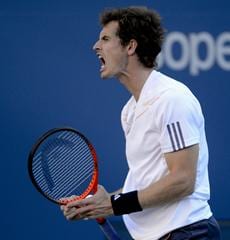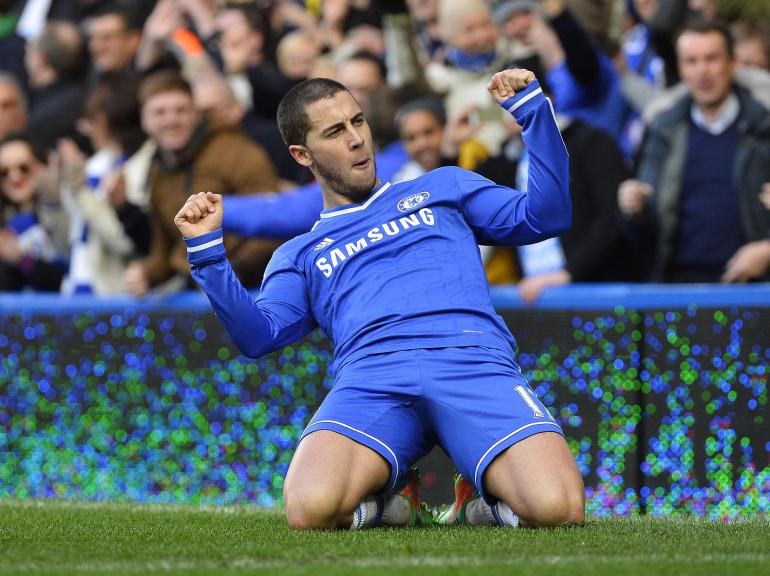Pro Tennis Player to Pro Tennis Trader With Nick P
In this edition of Trader Talk, I catch up with Nick H who is a member of Ultimate Tennis Trading and is now in a position where he makes a high 5 figure income from his tennis trading.
I remember when Nick joined me at UTT and he was confident he would do well as he used to play tennis professionally.
Well, his confidence has certainly paid off and it is very exciting for me to sit down and have a good talk about his journey. This was one of the funnest talks I have done in a long time so I hope you enjoy it as much as I did.
Go grab a cup of tea, coffee or a nice cold beer and let’s get into it!
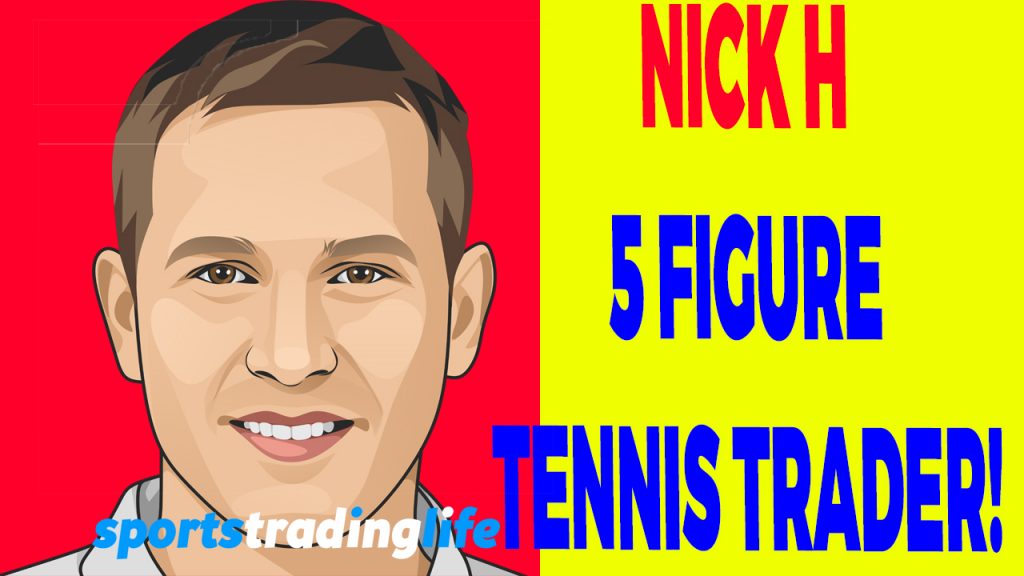
Hey Nick Many thanks for sitting down for this interview for the Sports Trading Life readers.
I am very excited to speak with you about this.
But firstly, tell us a bit about what you were doing before tennis trading came along?
I originally come from Yorkshire and was brought up there.
I was very sporty as a child and tried to initially make the grade as a footballer before taking up tennis and trying to make it as a professional.
From 18, I then based myself largely in London whilst competing internationally, then running a coaching business and now I have been running a business in the leisure industry for over ten years in the South West.
I am able to now spend some of my time back in London as my business is seasonal and I also have a business partner who also takes on some of the managerial side. I enjoy working for myself and having the freedom to make my own decisions.
Interesting. How did you discover the world of tennis trading?
I always played around on Betfair and then started to hear that actually there are a lot of serious tennis traders out there and some of them do very well without anything like the knowledge that I have of the game having played professionally.
I am not saying that this is essential, as I feel that the vast majority of skills can all be acquired through experience from knowing nothing actually and also there are many skills that a sports trader has that aren’t really connected to whether someone has detailed technical knowledge of the game.
Saying that, it definitely helps. I know a lot about the players, their styles, their scope for progression, their preferred conditions, etc. I understand how matches play themselves out from a mental point of view and I am aware of how matches can ebb and flow through my playing/coaching experience.
So with all this in mind, it seemed like a decent option to try and give it a go to see if I can make some decent money.
I have done fairly well up to this point, but I am curious as to whether I can do a lot better.
So you run your own business and then trade alongside it. Does having a business take the pressure off trading?
Yes I do think that having a business on the side takes pressure off as obviously I know there’ll be some guaranteed money coming in and the bills will be paid.
Saying that, I really feel now that many people get stuck in trap of chasing around on a rat wheel and having no time to try new things and take risks.
To a degree, society puts that pressure on people to conform to the conventions of doing the normal 40-50 hours a week full time grind. The system is largely there to keep people in their place and stop people from elevating themselves to completely different places in terms of their wealth.
Full time jobs don’t really help as they take away your time and energy. It’s tough. I have decided to tone down my commitment to my business a bit so I can explore multiple income streams and ventures.
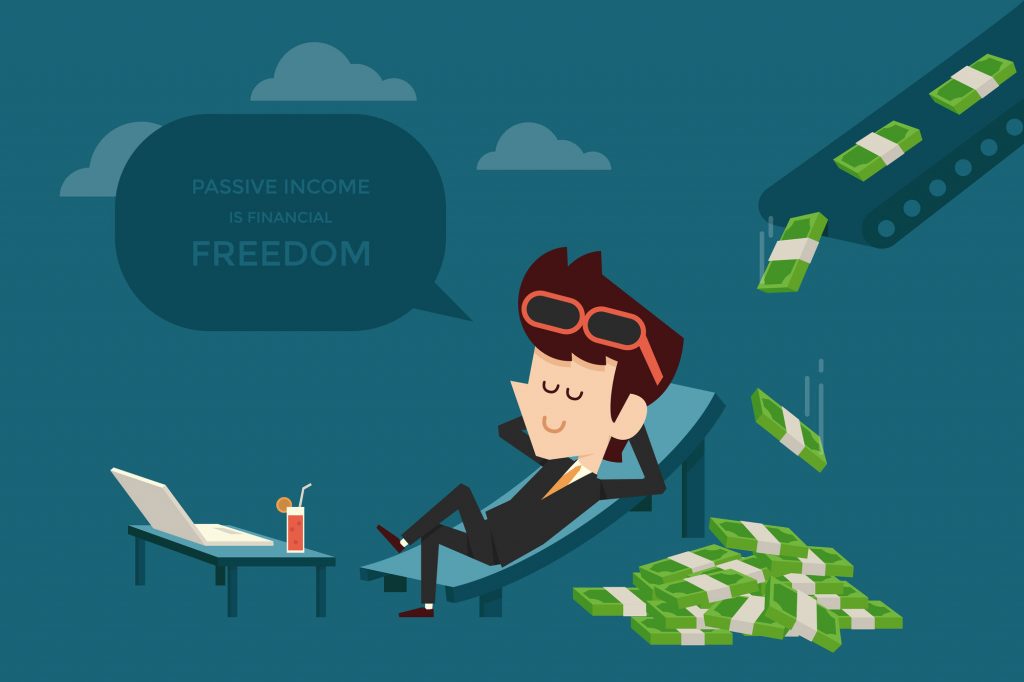
It means paying my business partner more, but on the other hand I have more time.
So I do spend more hours sports trading in autumn and winter as my business is seasonal and that’s when I have more flexible time.
Saying that, I will now plan events more and trade them more seriously such as the tennis Grand Slams (most of the day each day), Saturday football, Cheltenham horse racing festival.
You just have to be a bit flexible with sports trading and run with where the opportunities are at any given time.
Although, the great advantage of tennis trading (even against football) is that there are tournaments on about 48 weeks of the year in all different time zones. Matches start on Sunday/Monday and finish at the weekend, so there are so many opportunities to get involved even if someone works full time.
In fact, fairly boring Mondays or Tuesdays in terms of other sports are actually pretty exciting in the world of tennis trading as this is when the first and second rounds of tournaments take place and there are so many trading opportunities. These can be much better days than the semi finals and finals days at the weekend.
Yes very true. I can relate to a lot of what you said and that is the essence of the Sports Trading Life blog. So, how long did it take you to become profitable at tennis trading?
Quite a while if you take my betting into account over the years, but if you count it from when I have taken it more seriously with structured strategies for trading, then just a few months.
Being an ex tennis pro sounds like it helped you. However, not everyone reading will have played tennis. What sort of things can you share about being a player that helped you with the tennis trading? Anything in particular to look for?
Well firstly, I can spot when a player has the potential to make a comeback which is important in trading as a lot of the time I am looking for a turnaround in a match.
Sometimes a player is hitting the ball well but the scoreline is just not telling the full story. Having played under pressure, I know a match is never over until the final point is won and in tennis it can really pay to be contrarian in terms of the score and the odds. The market will tell you a match is over when it really isn’t.
Don’t be scared to back players that are losing. I once won a match in a fairly big tournament from 6-0, 5-1, 40-0 down. 1.01 on Betfair I reckon! I love backing players that are a set and a break down in the second set as you usually get huge odds, but it’s only one break of serve to get back into it. Especially if the play is still tight and competitive.
Having the knowledge of the tour and players does help.
I know a lot about different players’ game styles and how they might match up against each other and on different surfaces. The good thing is – all the info is out there.
Look at recent form, head to heads and especially previous records at tournaments. For example, look at Nadal’s clay court record in terms of titles won – French 13, Barcelona 12, Monte Carlo 11, Madrid 2. It doesn’t take a rocket scientist to show he is more of a lay in Madrid as he doesn’t like it there because of the altitude conditions. Same with Wimbledon – he’s won it twice – but quite a long time ago.
Another thing to look for increasingly is cumulative fatigue especially in the men.
A player can look on really good from, but at the same time, he may be coming towards the end of his energy reserves short term and need a respite. The physical demands are massive now on the court. If a player has had back to back gruelling matches in consecutive days, then there could be a good laying opportunity. Or successive weeks on the tour – they may need a re-group and not fancy putting it all in in the next tournament.
With the Tiafoe Giron match, this was a classic example of spotting the cumulative fatigue. Tiafoe had been on a great run but had played many tough matches and just had to be tired.
I initially placed a lay of Tiafoe in the pre-match odds of 1.58 for £250 and when he won a tough first set on a t break, I placed another lay on him at 1.19 for £750, knowing that Giron was still really competitive. Giron won the next two sets quite comfortably against an exhausted Tiafoe.

Try to avoid concentrating on players with big reputations as they will often be poor value.
When trading, backing short priced favourites in tennis is NOT the way to make money. Remember the player you’re backing doesn’t have to win – they simply have to challenge and make it close or lead just for a short time. That could simply be holding serve and then being up 30-0 in a receiving game. That can be enough to take a decent profit.
Around which point in your journey did you join Ultimate Tennis Trading and in which ways did that help you?
I joined it a couple of years ago.
It helped because prior to this I was using a scattergun, haphazard approach and doing the course made me realise I need more structured strategies with disciplined entries and exits. I would highly recommend it for people look for more structure and also people with little knowledge of where to start on the sport.

Which strategies or approaches do you like to use? What makes tennis so good to trade?
I like to use your money method (obviously with my own flavour in pre-match selection), but more recently, I am starting to realise that the real value is in playing the comeback in-running – so your boomerang and flip methods (and variations of them).
As I am writing, I am trading matches in the Paris Open indoor mens event and I have literally placed a trade an hour ago on Hugo Gaston v Pablo Carreno-Busta. C-Busta was 7/6, 4/3 serving in the second with a break, so a decent lead but still really tight. Gaston is young, talented, progressive and being rousted along by a partisan Paris crowd and C.Busta was 1.04 to lay! That’s just wrong. No brainer. I laid for £250 – for £5 liability. He’s just won 6/7, 6/4, 7/5! This happens regularly, unlike any other sport. A beginner could lay that for £50 for a £2 liability.
How do you go about trading the winners markets?
Well, it’s important to get in early as these markets are time sensitive.
So with the one week tournaments, you need to get on by Sunday night/Monday morning depending on when it starts. With the slams, it’s a different ball game and the markets are offered months in advance.
A quick look on Oddschecker will show you any stand out prices. Then, with the slams think about which players are rapidly progressing and maybe quite a bit better within another 6 months (and remember the big three are not getting any better or younger now).
Forget Betfair with this as there is no liquidity. It has to be a fixed odds each way play as ½ odds in tennis for the final is the way to play. An example of this recently – I had Berretini at 80/1 ew for Wimbledon (played a few months in advance). An example for next year’s Wimbledon – Zverev can be backed at 16/1 and Medvedev at 10/1. Medvedev is 5/1 for the Aus Open and Zverev 8/1-10/1, so this makes Wimbledon look value. I don’t see these prices getting any bigger barring injuries (by the way, most bookies refund antepost tennis bets for no shows, which is an amazing deal – compared to horses). They are both starting to peak and Nadal and Federer are almost done for next year’s Wimbledon. Djokovic is still amazing but will be another year older.
By the time the tournament comes around, I like to have a few players in my book at good prices (that have mostly contracted and then I can trade it depending on the draw and the tournament plays out. In a slam, with Djokovic, clearly he is tough to play ante-post at evens or 6/4 and so I wait for an opportunity to get him onside in the tournament at some point. I think in the last 4/5 slams it has come every time with an injury scare, a disqualification, or a losing position in a match.
What is a silly newbie mistake you initially made that you now cringe about?
Backing short price favourites, thinking it’s easy money or placing endless trebles and 4/5 timers at short prices only to see one of them constantly going down.
For the bank you use, what sort of % return do you get on it monthly?
I am still honing my bank management, but I would say It’s 25% return per month right now. The question is, can I sustain that at higher stakes? I try not to risk too much on individual match play situations – especially the comeback trades at big prices eg 2-4% of the bank.
The tennis markets are pretty liquid and you are doing high 5 figures per year, maybe you could get it up to 6 figures? Do you have any thoughts about raising stakes?
Absolutely considering it.
I am considering increasing the stakes on the good opportunities that I see as I would like to take it to another level. For example, I am a bit annoyed with the Gaston trade today I mentioned that I didn’t lay it for a grand instead of £500 (so £20 instead of £40 liability). It was a good one.
You mentioned also doing football trading, how is that going? And how would you compare the two sports from a trading perspective?
Yes it is going better.
When I started it was more scattergun, but with your course it really helped me to streamline to 2/3 strategies and be more disciplined. I try to do quite a bit of football trading at the weekend and more tennis trading in the week. It works better that way – more football matches Sat/Sun and more tennis matches Mon-Fri. I am experimenting at the moment with O0.5/O0.1.5 goal markets in the second half and it is going quite well. It is also more time efficient obviously focusing on less than half a game. I still feel like I can improve a lot at the football trading with a bit more time and focus.
There are similarities – obviously the first and MOST important ingredient being value on the entry point.
I do feel that you have to wait longer for opportunities in football sometime compared to tennis, where you can get brilliant trading opportunities back and forth within minutes because of the scoring system and the way price responds to individual points.
I also saw you talk about trading Cheltenham and maybe having some inside knowledge? Anything you can share regarding that?
Well fortunately, a close friend does this for a living and I would say a significant percentage of his profits come from trading the festival.
Without going into too much detail the main angle is identifying price contraction along with race targets (many times it’s a little guessing game as to which horse will turn up in which race).
Certain races (non-handicap races) cut up to small fields on the day such as the novice chases (The Arkle, The Marsh and Festival Novice Chase and new Mares Novice Chase), The Ballymore Hurdle.
If the antepost market is played smart – maybe with some cross doubles or so, you can have some pretty good positions on the day. The real trick is to wait for non-runner no bet with the bookmakers and then you can have a play at quite a few, which is what we do and this brings in the handicaps too. We always end up with plenty of non-runners, but it gets refunded as long as it’s non-runner no bet. This will be offered at different stages by different books leading up to the festival. On the day, it’s then a simple case of hedging.
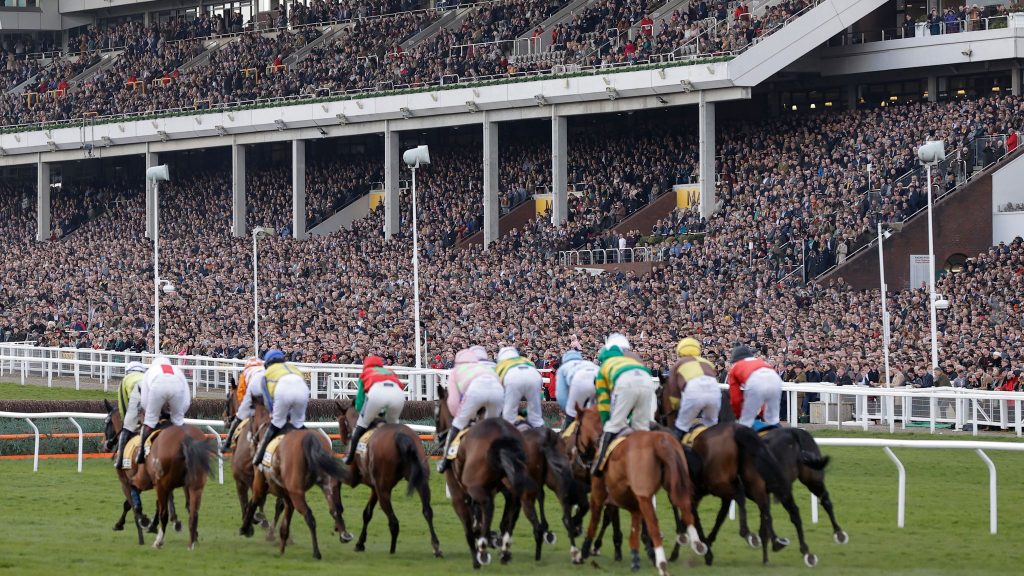
What has been your most memorable tennis match to trade?
Not sure what my biggest profit from a single match is but I can tell you the best combination of outright and match trading.
A couple of years ago Medvedev lost in the final of the US Open to Nadal in 5 sets. He had really announced himself that year, but was still off the bookmaker’s radar earlier in the season (hence the outright strategy mentioned earlier). Well Unibet had him at 200/1 ew ½ the odds! And they had it there for a while as well – a good couple of months. So I went for it with several each way bets over a period to win quite a lot. He made the final so the ew was in, but the great thing was I also had Nadal at 6/1 ew. The final result was still going to be a massive difference though – like 8k if Medvedev won.
So I decided to wait for trading opportunities – and there were plenty of them! Nadal started at around 1.3 odds and looked like running away with it going two sets up. Medvedev then played two hours of amazing tennis to level it. In the decider, Nadal never went a break down, but actually very briefly touched odds against – around 2.1, before he held and went onto win. I was able to trade out at many different prices for an overall great win.
My initial outlay in the winners market, pre-tournament, would have been around 1k.
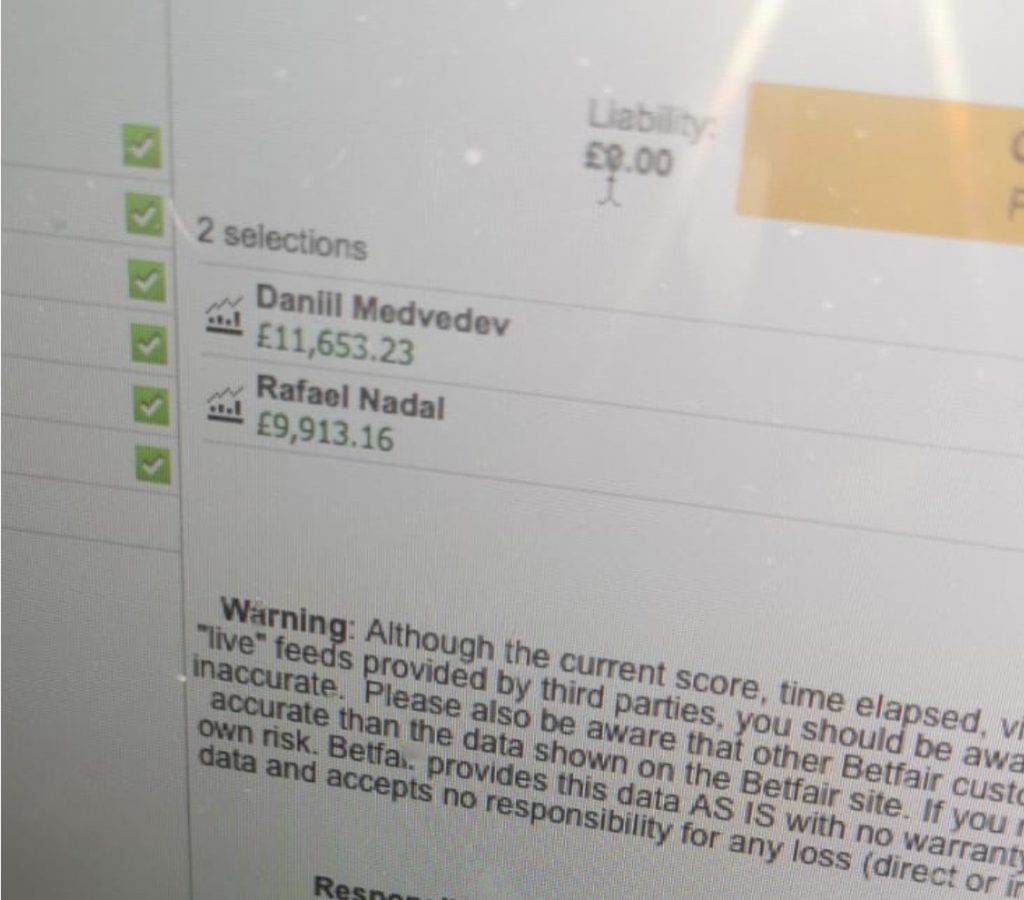
Sounds good, OK Now for the fun part. tell us about your WORST day as a tennis trader.
Quite a few of them!
The silliest recent loss was when Djokovic was disqualified for hitting that ball down the lines woman’s throat. I was heavily involved in the tournament and wanting to get Djokovic onside. He wasn’t at his best that day and was having a few niggles with a couple of injuries, but nothing really serious.
Anyway, he had the trainer on and shortly after that I took my eye off the ball and saw he had gone out in the market (not realizing what he had just done!). I started to steam into backing his price having more and more on, until I realised something else was amiss. I looked at the TV and couldn’t believe what he had just done. This all happened over about 2/3 minutes and I knew it was certain disqualification coming and by this time so did the market! It was a bit unlucky as I had taken my attention off the TV for a couple of minutes – but maybe there’s the lesson when you’re heavily involved.
Still – what were the odds on that happening??
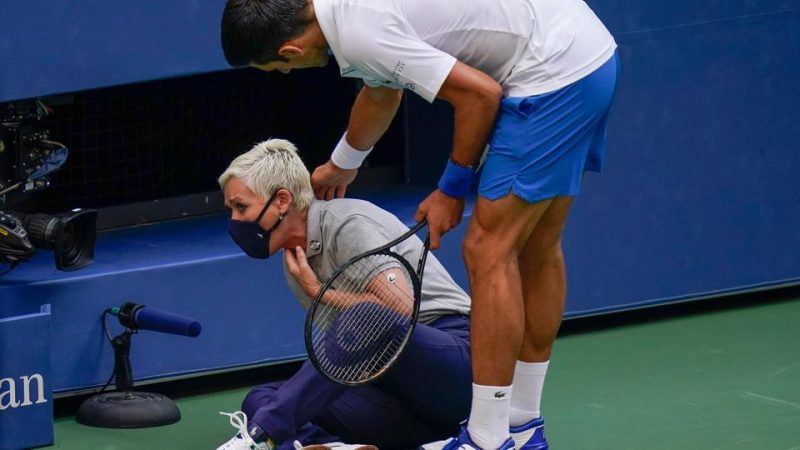
Most readers of this blog are into football trading. What could you say to convince them to give tennis trading a go?
I think there’s plenty of reasons above why they should try it.
The value to be had is amazing for sometimes a little risk and there are so many trading opportunities coming along all the time within minutes. There is tennis on often all day every day in all times zones. Football trading is at more restricted times and then all comes at once. You can combine both really well for this reason. I would advise beginners to start with small stakes and play around with matches that might turn around.
After doing it a few times, you’ll get to know your players more and it’ll become more interesting. And take the course in Ultimate Tennis Trading!
Finally, what are the future plans? You sound pretty comfortable with life at the moment but are there any plans to take this further?
Well, I would like to progress to higher profits which will ultimately require larger staking.
I don’t intend to work full time for anybody ever again (making them rich!) and hopefully neither will some of your readers. Like I said earlier, the system is there to keep in you in your place, but it doesn’t have to be that way.
I am also considering the idea of helping some people with tennis trading too, as I feel that I have a lot to offer. We’ll see.
Is there anything I haven’t asked you about today that you would like to talk about?
Think that’s it for now Ben. I’d just like people to give it a go! There’s good money to be made out there.
Many thanks for taking the time!
To get more information about the Ultimate Tennis Trading course and join the waiting list for the next opening please submit your best email address below.

-----------------------------------------------------------------------
Want to see HOW we make Correct Score Trading Profits Like This?

Check out our FREE Correct Score Trading ebook while it is still availableand get it all explained.
Price: FREE
Just tell us where to email it to...
CLICK HERE TO DOWNLOAD NOW!-----------------------------------------------------------------------

